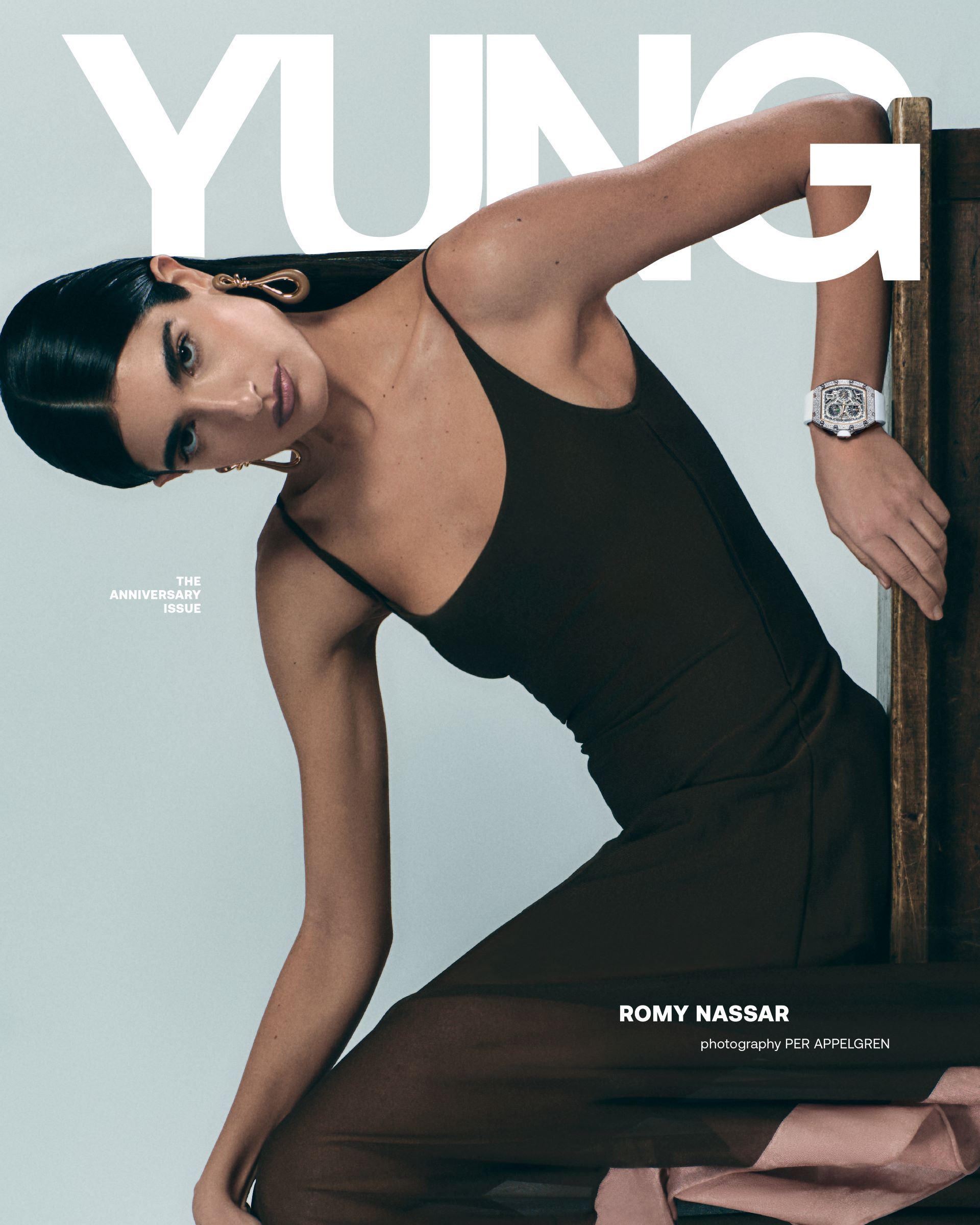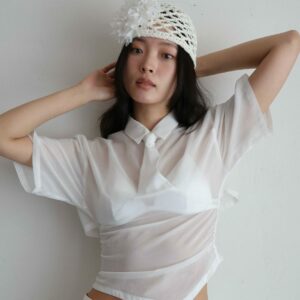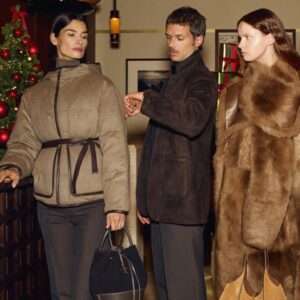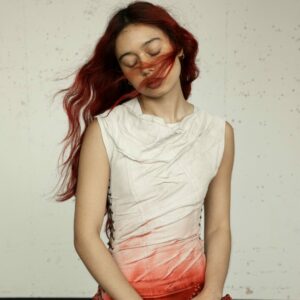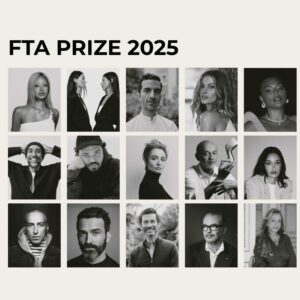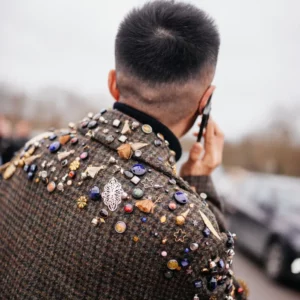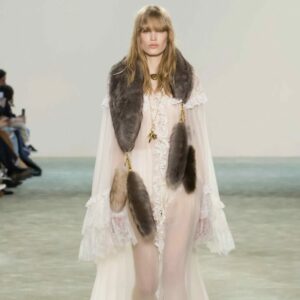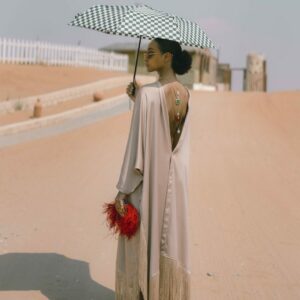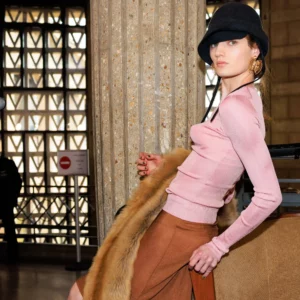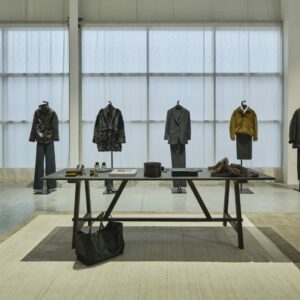There’s something elusive about Romy Nassar (Instagram)—she wears the kind of beauty that doesn’t ask to be looked at, but insists on being remembered. Born in Lebanon, based in Paris, and discovered almost by accident, she is the kind of model who resists the very premise of modelling. She didn’t grow up dreaming of the runway, and still questions whether she belongs in the industry at all. But then she moves—on camera, in conversation, through cities—and you understand why she’s here. With hair that refuses to be tamed and a voice that refuses to be silenced, Nassar carries herself like a woman who knows she exists outside of time, outside of categories. Her presence is not a performance—it’s a provocation.
In a world that often demands women to be either tender or tough, Romy Nassar is both—and so much more. She walks the line between myth and modernity with a quiet force, the kind that doesn’t demand attention but commands it. When she stepped onto the runway in Athens for ZEUS+DIONE’s 10-year anniversary show—her first and only runway experience so far—it was as though she had been written into the script of history itself. “The air was thick with history… and humidity,” she recalls. “The energy absorbs into you, makes you hold yourself differently.” On that runway, the Canadian-Lebanese model wasn’t just walking—she was flowing, divinely appointed and defiantly herself. “I arrived, at least in the eyes of the Gods.”
And yet, modelling was never part of the plan. “I never envisioned myself as a model,” she says. “I don’t think I look like one.” The journey began with a selfie—a casual post noticed by a friend who passed it to her agent. Within a week, Romy had signed her first modelling contract. It was 2020, the world was in lockdown, and so too was her career. “I didn’t work at all until late 2021,” she says. But the delay didn’t deter her. If anything, it only deepened her sense of adventure. “I worked in almost every industry before this,” she says. “And the things I get to do in modelling, I would never experience in any other career.”

There is a quiet contradiction in Nassar that feels entirely contemporary: she is both self-questioning and self-possessed, instinctive yet sharply observant. She brings depth to a world often defined by surface, revealing new dimensions of what it means to hold space in fashion today. In Paris—her newly adopted home—she finds a city that mirrors her paradoxes. “It is romantic but also rigid. Elegant yet not suffocated by it,” she says. “I love the chase, the art of seduction, and the challenge… whether it’s with people, fashion or even life itself.”
She’s quick to dismiss glamour as a façade, describing the industry as mentally exhausting—visually opulent but emotionally starved. The environments may shimmer with excess, but behind the scenes, she often feels like she doesn’t belong. There’s an edge to her insight, a clarity that cuts through the artifice. Fashion demands depth to create, yet so much of it is built on surface-level exchanges and a whole lot of pretending. Still, she plays the game—barely. “The waiting game is brutal,” she admits. There’s a constant rush to fittings and castings, only to spend hours being overlooked. The urgency is always on the model’s side, while clients move at their own pace.
In Nassar’s world, presence is everything. And hers is magnetic. It’s in the heavy heels she wore in Athens, her feet sweating from her nerves. It’s in her refusal to tame her hair, even when stylists suggest otherwise. “I usually feel restrained by talents,” she admits. “They think I’m not skinny enough, or that I have so much hair.” But in the show for ZEUS+DIONE, she felt something rare: seen. “We were flowing. Marios Schwab made me feel part of the mythology.”
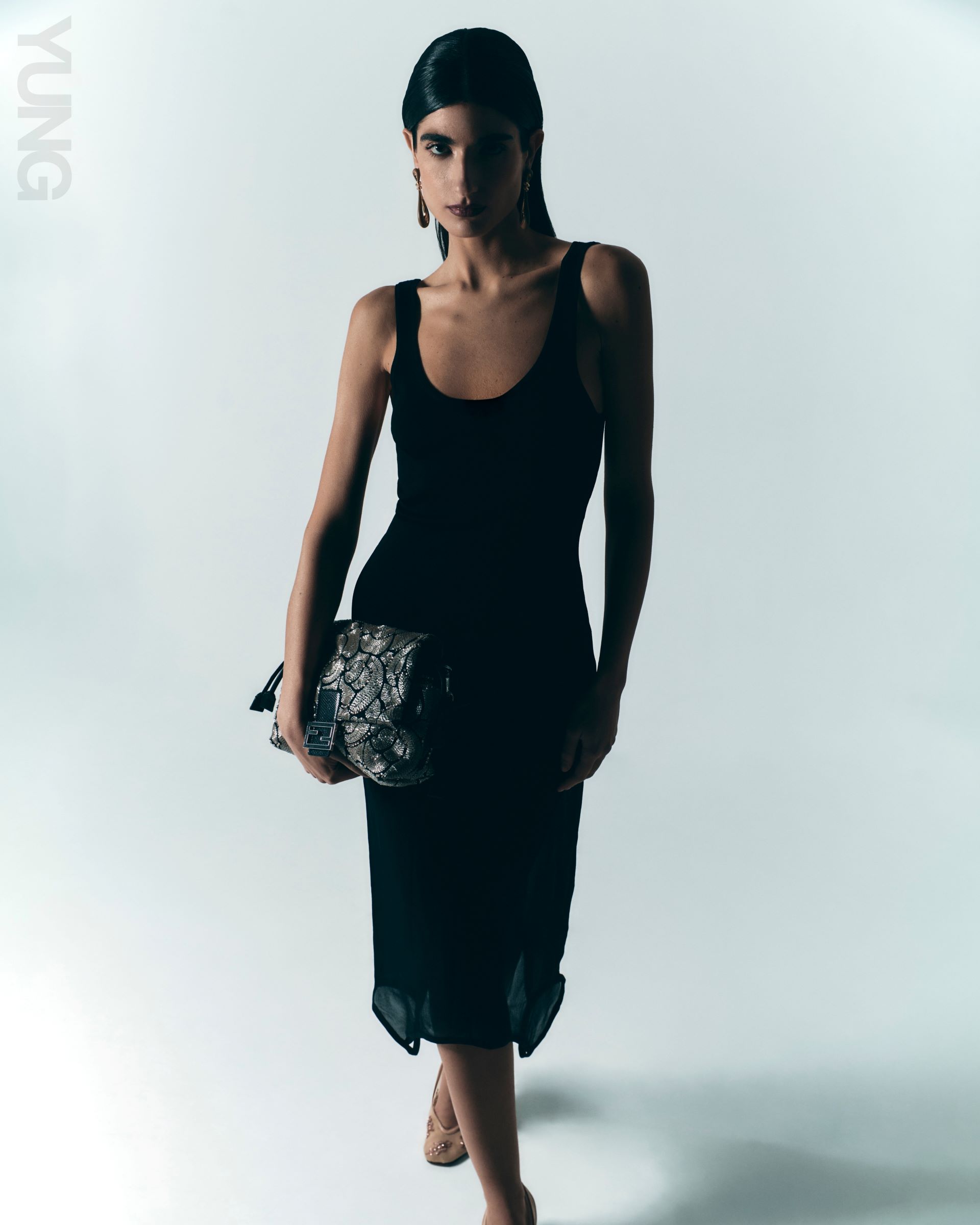
There’s a vintage glamour to Nassar—not in the polished sense, but in the way her beauty seems unbothered by the passage of time. Her watch doesn’t display the real time. “I always feel like I exist outside of time,” she says. She dresses not for trends or attention, but for memory. “I dress for myself, for the lovers in my memory, and the nights I never forget.” Her jewellery is bold. Her makeup is messy. Her hair, “loose and imperfect.” Nassar doesn’t accessorise to impress; she adorns herself with history. “I lose an earring at a party and leave it behind like a breadcrumb for a future lover.”
Her curated vintage jewellery page has developed a quiet cult following, though she never expected it to intersect with her modelling career. “I love tassels, ribbons, and opulence,” she says. “I want history—the weight of the past on my skin, a ring that once belonged to a woman who knew how to break hearts.” To Nassar, true luxury is sentimental. “If a piece of clothing or jewellery doesn’t have a secret, it’s not worth wearing.”
Modelling, then, is just one facet of Nassar’s creative life. “It’s a medium, not my final form,” she says. There are other paths calling—embroidery, for one, which she describes as her feelings “woven into fabric.” It grounds her. Calms the chaos. “I touch everything I see,” she says. “It’s so awkward, but I can’t help myself.”
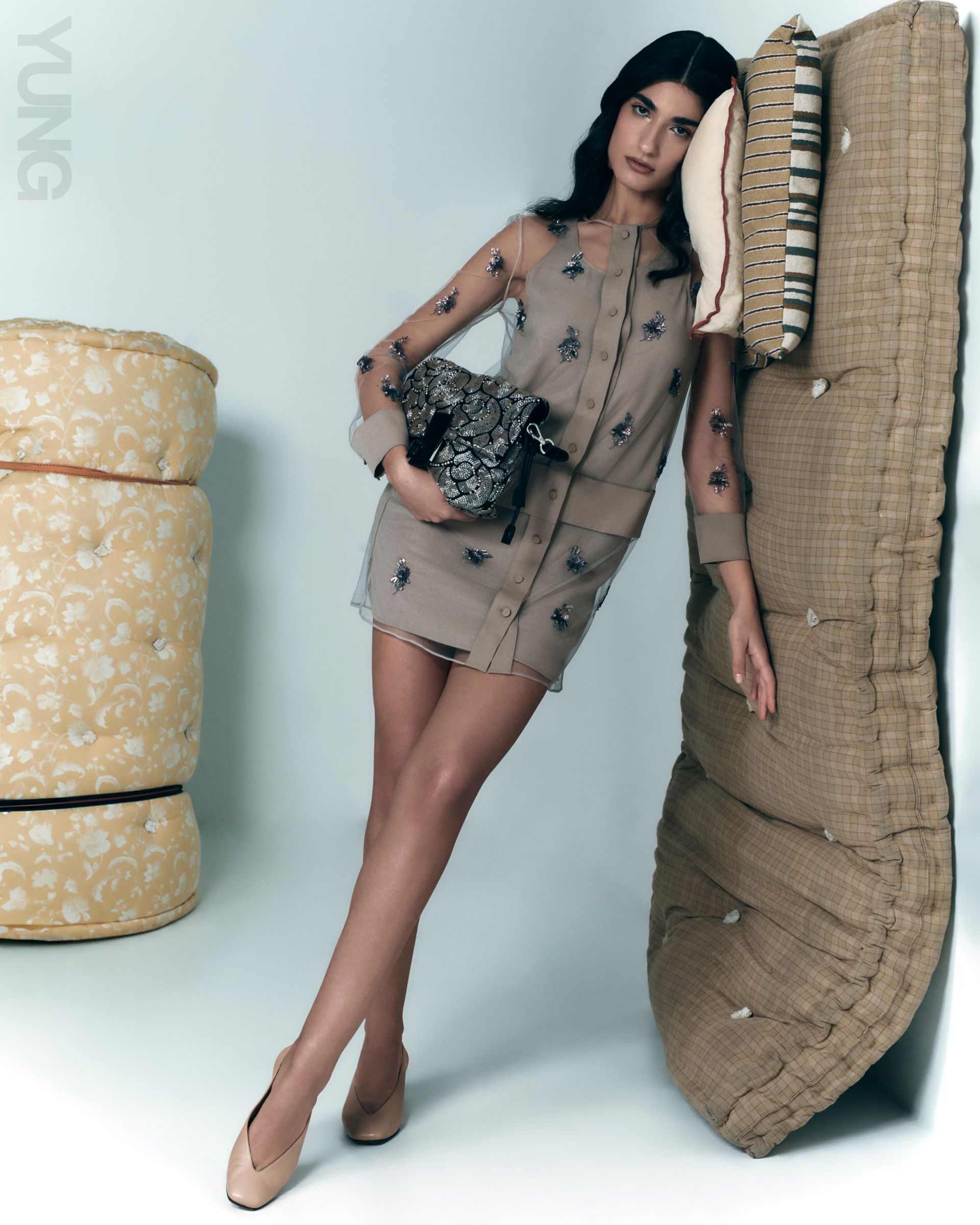
Her creativity, like her identity, is deeply personal. Born in Lebanon, Nassar was raised to believe that “beauty is care and intention.” Her parents remain her biggest fashion inspirations. “The house was always beautiful, the table was always set,” she recalls. “They taught me real fashion: the fashion of values.” In her world, dressing is never performative—it’s a form of respect. A gesture of love.
Despite the industry’s obsession with diversity, Nassar approaches the subject with caution. The fashion world, she notes, often talks about change but moves only when it’s convenient—its embrace of representation still feels highly selective. Her own challenges haven’t stemmed from her background, but from the strength of her voice. While the industry welcomes diversity in aesthetics, it’s far less comfortable with diverse opinions. Nassar refuses to be reduced to just a face. “I believe that my look, my heritage, and my uniqueness cannot be celebrated without my voice,” she says. For her, a story is incomplete without the person brave enough to tell it.
There is an urgency to Nassar’s presence in fashion—but also a refusal to cling to it. “The industry is not a meritocracy,” she says bluntly. “Even if you lose all the weight, it doesn’t mean you are going to get the job. Better stick to your looks and your style.” She knows the game. And she’s playing by her own rules.

When asked if she has a dream brand to work with, Nassar shrugs. “I never dreamed of a specific brand,” she says. “I only dream of moments.” And when those moments come—she’ll meet them. “Even in chaos, there’s a path being cleared for me,” she says. “Even in uncertainty, I land exactly where I am meant to be.”
Five years from now, Romy Nassar may still be in fashion. Or maybe not. What’s certain is that she’ll still be evolving. “I move on instinct and desire,” she says. “I have God on my side and I trust that He will protect me all the way.”
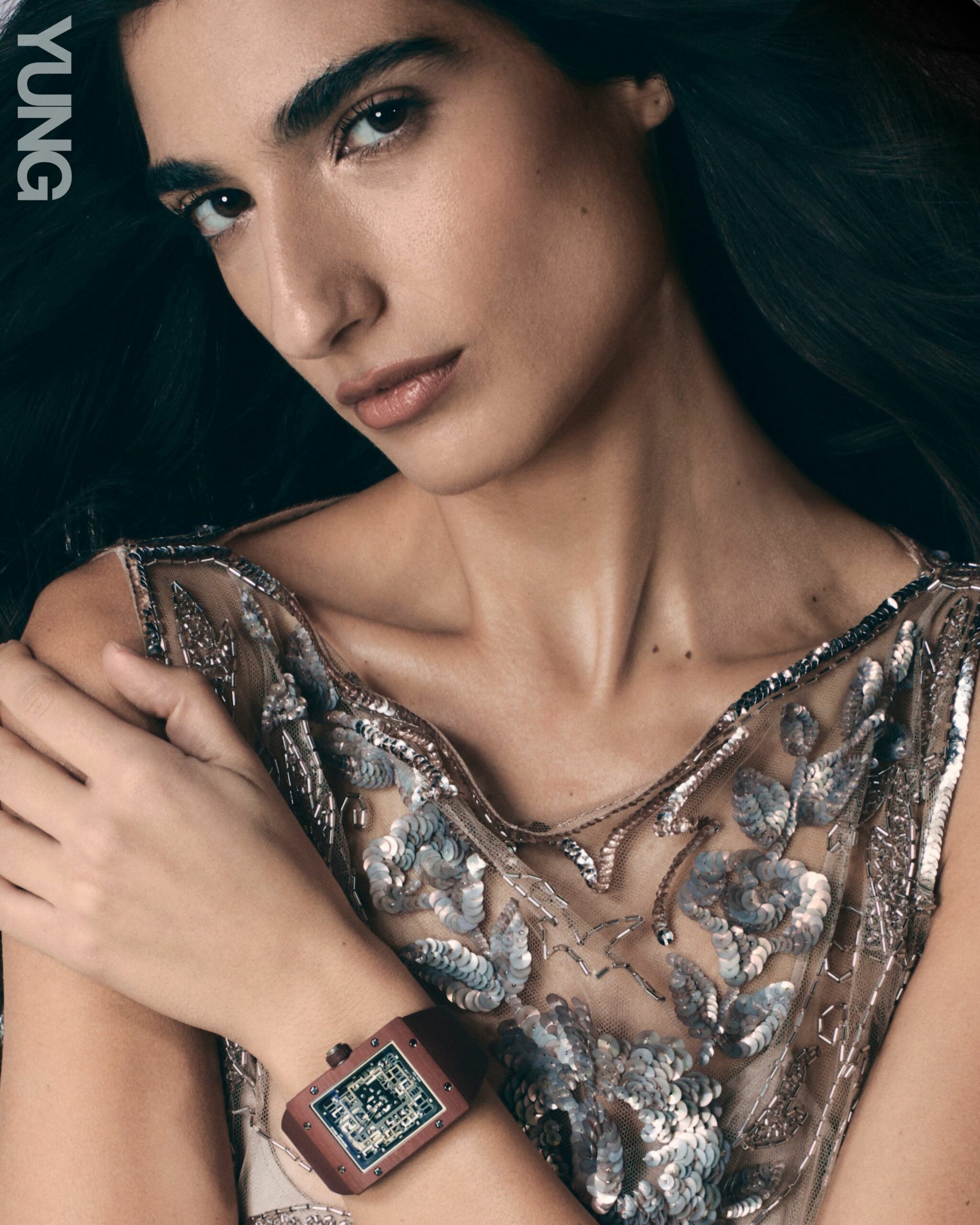
In the end, perhaps the most Nassar thing about Nassar is her refusal to be decoded. Her portfolio may show her angles, but it doesn’t show her essence. “They can’t see my contradictions,” she says. “The softness and the sharpness, the way I can be both detached and deeply sentimental, both untouchable and vulnerable.” That duality is where she lives. And from that tension comes her magic.
Romy Nassar is, in her own words, “intentional but never stiff.” A model, yes—but only temporarily. A muse, certainly—but one with her own agenda. She leaves traces of herself everywhere: in lipstick-stained glasses, in vintage earrings, in whispered runway mythology. Her presence, like her style, lingers.
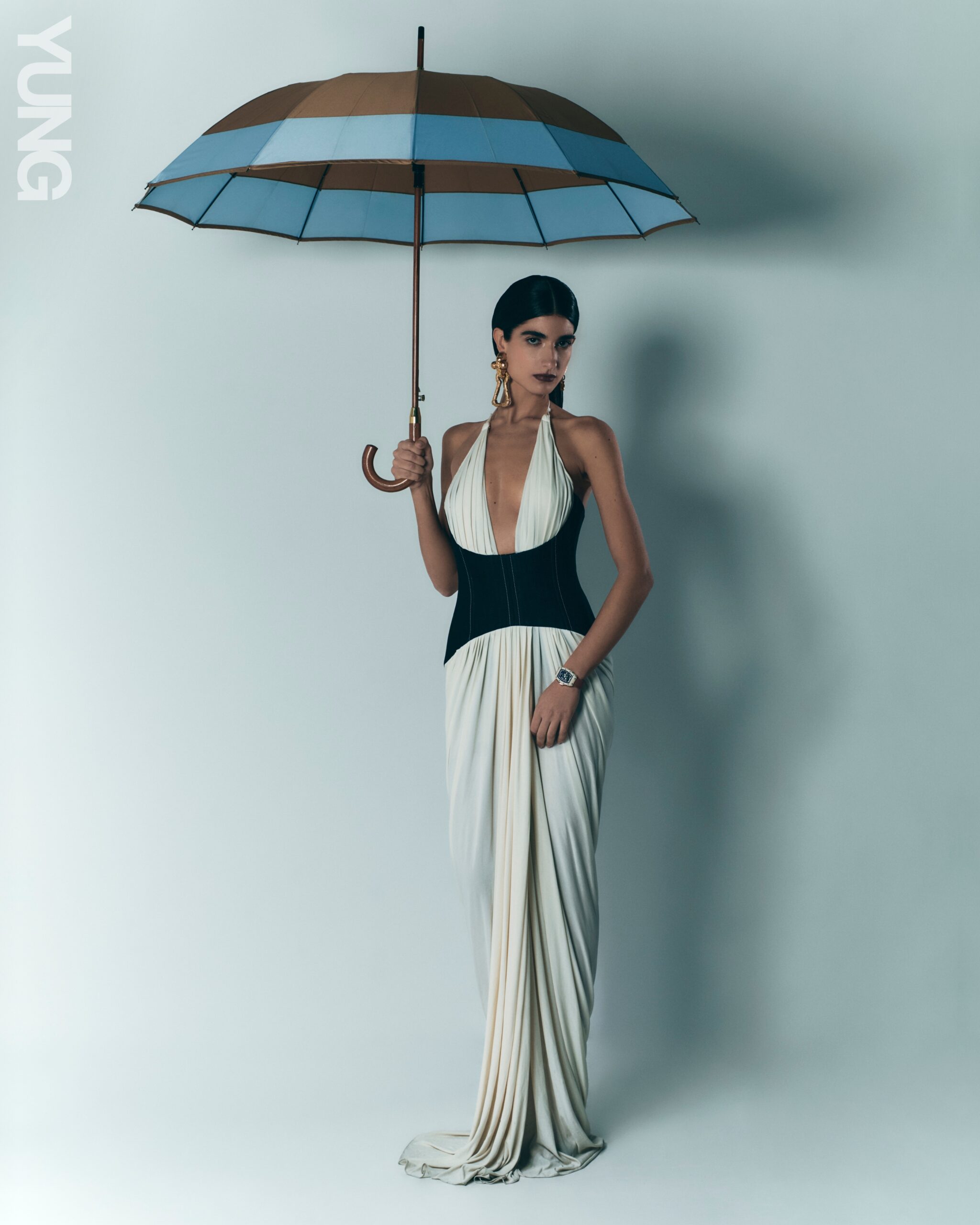
For more stories of fashion, international and regional, visit our dedicated archives.
